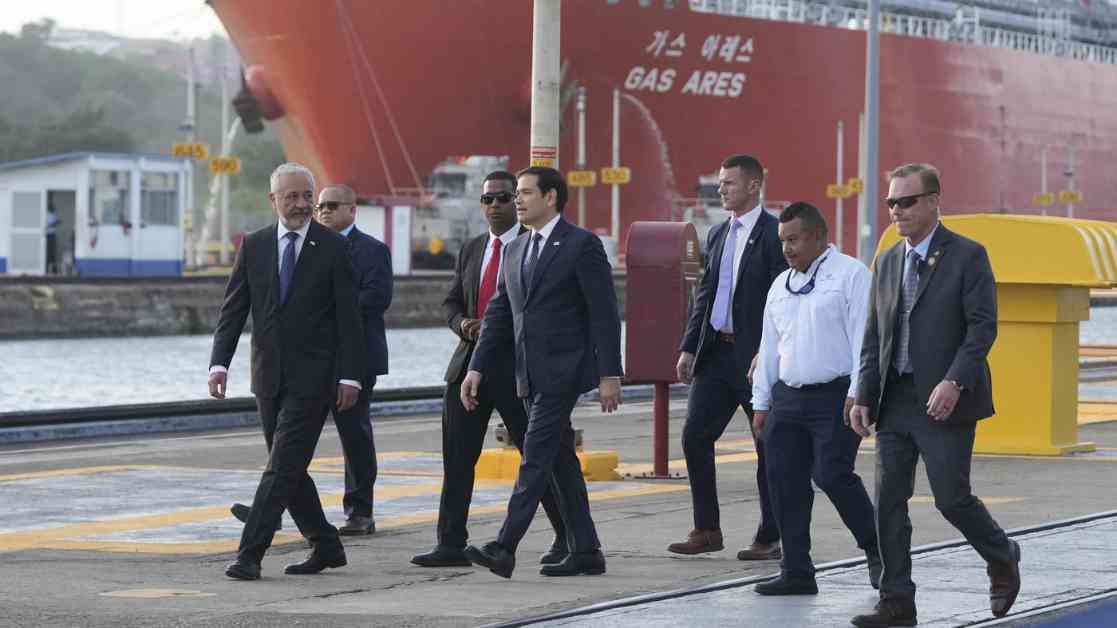The Panama Canal: A Historical Waterway of Global Significance
The Panama Canal stands as a testament to human ingenuity and engineering prowess, serving as a vital link between the world’s major oceans for over a hundred years. Every day, countless goods crucial to American daily life traverse this 51-mile waterway, from essential commodities like gasoline to everyday necessities like food. However, recent developments have thrust this iconic location into the spotlight, with the United States Secretary of State, Marco Rubio, making a significant visit to Panama in February 2025. During his trip, Rubio delivered a clear message to President Trump regarding China’s growing influence over the canal, warning of potential consequences if action is not taken to protect American interests. This bold stance by the Trump administration has the potential to reshape global politics, making the Panama Canal a focal point of international attention. Let’s delve into the intricate web of people, history, and geopolitics that converge at this critical juncture.
Navigating Global Trade: The Panama Canal’s Strategic Importance
The Panama Canal’s strategic significance cannot be overstated, as it serves as a vital artery for global trade, connecting the Atlantic and Pacific Oceans and facilitating the seamless passage of goods between continents. Since its inception, the canal has played a pivotal role in shaping international commerce, allowing ships to bypass lengthy and treacherous routes around South America’s southern tip. This shortcut not only saves time and fuel costs but also enables the efficient movement of cargo on a massive scale, bolstering economic exchanges between nations. The impact of the Panama Canal reverberates far beyond its physical boundaries, influencing trade patterns, supply chains, and geopolitical dynamics on a global scale.
A Diplomatic Dance: The Panama Canal in the Spotlight
Against this backdrop of historical significance and economic importance, recent events have thrust the Panama Canal into the geopolitical spotlight. Secretary of State Marco Rubio’s high-profile visit to Panama underscored the United States’ concerns about China’s increasing influence over the canal, a development seen as a potential threat to American interests. Rubio’s message to President Trump regarding the need to safeguard U.S. rights and interests in the region reflects the growing tensions surrounding the canal’s ownership and operation. The specter of a potential power struggle over the Panama Canal looms large, with implications that could reverberate across international relations and trade agreements. As the Trump administration asserts its stance on protecting American interests, the future of the Panama Canal hangs in the balance, caught in the crosscurrents of global power dynamics.
Charting a Course Forward: Navigating the Waters of Global Politics
As the Panama Canal finds itself at a critical juncture in the annals of history, it serves as a microcosm of the broader geopolitical landscape, where economic interests, strategic alliances, and national sovereignty intersect. The delicate balance of power surrounding the canal underscores the complexities of modern diplomacy and the challenges of safeguarding vital infrastructure in an increasingly interconnected world. The United States’ assertive stance on protecting its interests in the Panama Canal sets the stage for a potential showdown with China and other global players vying for influence in the region. The outcome of this high-stakes diplomatic dance will not only shape the future of the canal but also have far-reaching implications for international trade, security, and cooperation. As the world watches with bated breath, the Panama Canal stands as a testament to human ambition, resilience, and the enduring quest for progress in an ever-evolving global landscape.
In conclusion, the Panama Canal’s rich tapestry of history, commerce, and geopolitics continues to weave a complex narrative that captivates the world’s attention. Amidst shifting tides of power and influence, the canal remains a beacon of human achievement and a symbol of connectivity that transcends borders and boundaries. As the Panama Canal navigates the choppy waters of global politics, its enduring legacy as a conduit for progress and prosperity shines bright, illuminating the path forward for generations to come.



















